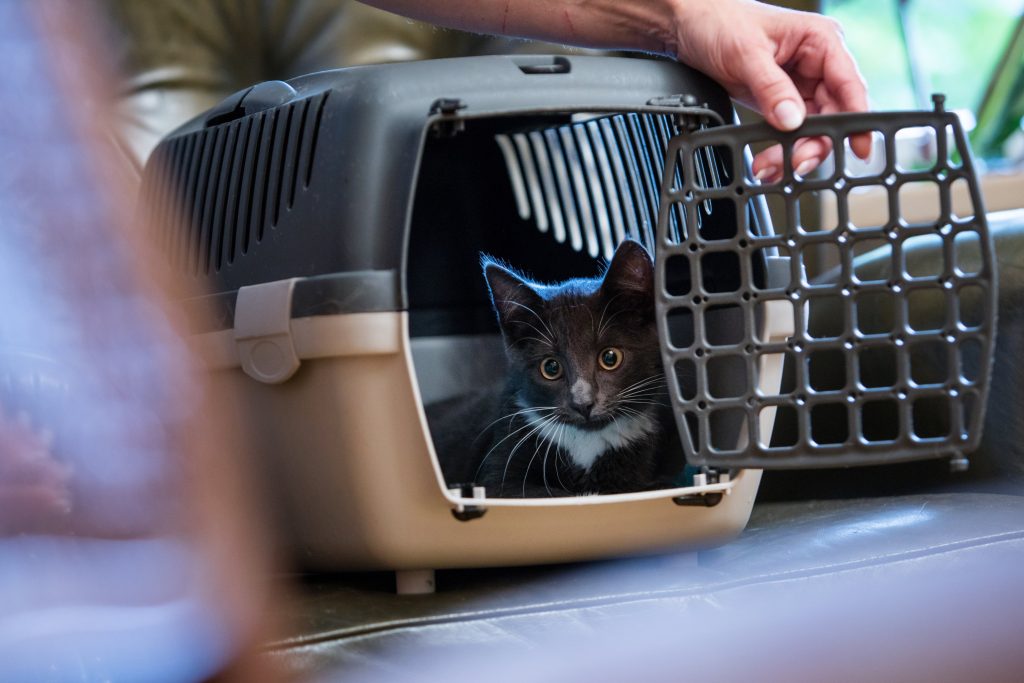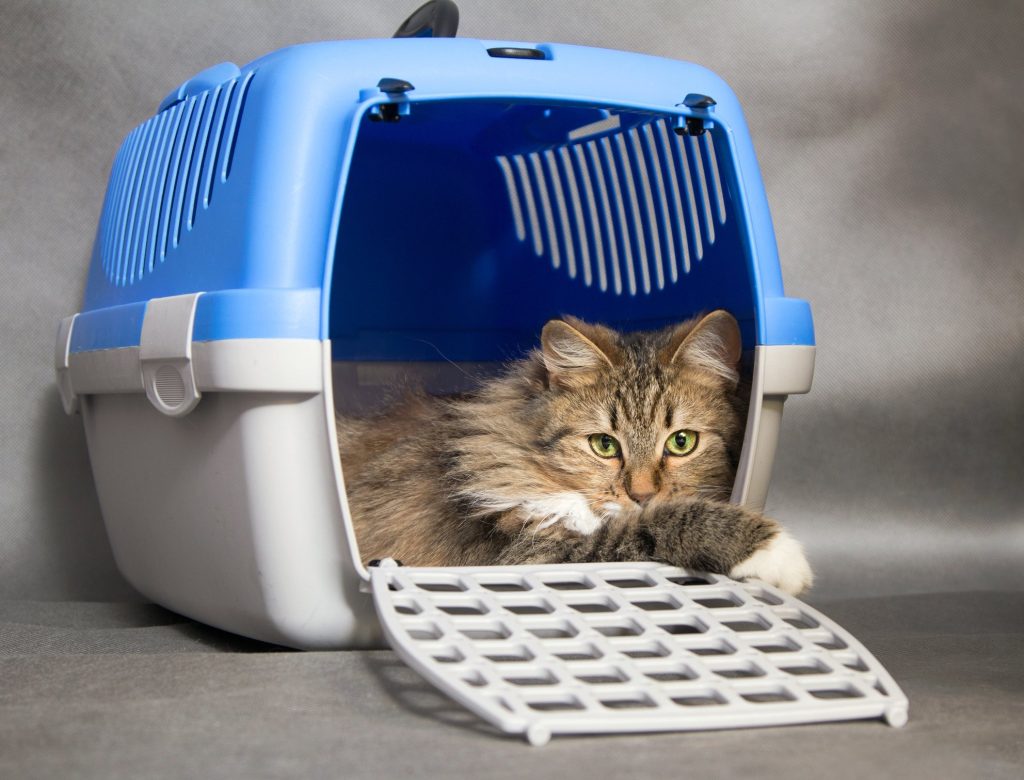Table of Contents
Tips to get your cat in a carrier
One of the most important tips about the transport box is to familiarize the cat with the transport box. When you get a cat, you should have a transport box and get the animal used to it. If the box is only taken out of the basement for a visit to an animal doctor, anxious animals in particular will quickly run away as soon as they see the transport box. Make the transport box a normal everyday item. Make sure that the cat doesn’t just see the box as a means of transport, but also sees it as a place to retreat. If your cat’s transport box has not previously been a place of peace and joy, you can start by transforming it into one. The cat should get to know the transport box step by step.
Integrate the cat carrier into everyday life
For many cats, the transport box is a symbol of a change of location that they themselves do not want. The connection between “unpleasant vet visit” and “transport box” is reinforced if the box is only in the room on such occasions. You can avoid this mistake if you integrate the transport box into your living space. Here’s what you can do if you want to make the transport box more interesting and familiar for your cat:Piece of furniture:
The transport box should be part of your cat’s living space as naturally as your home furniture. Make the transport box part of your inventory and place it openly in the room so that the cat always has access.Cozy and cozy:
Make the inside of the transport box cozy and cozy with blankets and pillows. Cats love caves and they particularly enjoy retreating into a cozy cave.Treats:
Turn the box into a place of joy by repeatedly hiding treats there. You can also feed particularly anxious cats regularly in the transport box to take away their fear step by step.Attractive smell:
There are some smells that cats particularly love. This includes, for example, the smell of catnip. You can make the inside of the carrier more attractive by spraying it with catnip or placing a catnip-filled toy or pillow inside.Play equipment:
Do you have a playful animal? Turn the transport box into play equipment and include the box in the game rounds with your cat.Protection from intrusive looks:
Some cats appreciate having good visibility and being able to observe their surroundings around the box. However, this makes other animals nervous. If your cat tends to be disturbed by strangers’ looks, you can provide a little more privacy with a blanket or towel. For some cats, it may also make sense to put something in the box that they know well and like. This could be, for example, a piece of clothing from the owner, a blanket or a cuddly toy. Familiar things can provide security and calm fearful animals. In this way, your cat will soon no longer be afraid of the transport box and will not hide as soon as it is in the room. Once the move or visit to the vet is over, the cat is allowed out of the box and the box is reintegrated into the living area as before.
Cat is not used to the cat carrier – what then?
Don’t you have enough time to get your cat used to the transport box? It is not always possible to take enough time before a visit to the vet and to familiarize getting cat into a carrier over days or weeks. But even in such a case, there are a few things you can do to save yourself and the cat unnecessary stress.Good preparation is everything
Prepare your visit to the vet well. The correct procedure is to prepare the transport box the evening before. Line the box with wipes, pillows and a changing mat and place the box in a strategic location. This means that you place the box so that you can easily get the cat into the box. You already put the door of the box open. Then pack a bag with everything you need for the trip to the vet. This could include treats, an extra towel and the cat’s vaccination record. In this way, you as a cat owner are much more relaxed and can have a calming effect on your cat. If your cat is very anxious and very sensitive and if this is possible, put the box up two to three days before the vet visit. Important: If there are hiding places in your home that your cat likes to use but you cannot reach, it may make sense to block access to these hiding places a day in advance.Urgent vet visit – The right procedure
Now it may be that a visit to the vet is very urgent and you can neither slowly familiarize your cat with the box nor provide the box a day in advance. If you need to take your animal to the vet immediately, proceed as follows:-
- Put the cat in a quiet room and block escape routes.
-
- Get the box and, if possible, bring it into the room so that the cat does not see it immediately.
-
- Then lift your cat so high that it cannot see the transport box. Try to hold the animal so that its back is to the transport box.
-
- Then you lift your animal quickly but calmly into the transport box. Speak to the cat in a calm tone.
-
- Once the cat is in the box, you can pet it or reward it with treats. Very anxious animals will try to leave the box quickly. With these animals you may have to refrain from praising them and close the box quickly.
-
- Finally, close the box. You may want to cover the box with a towel or blanket. You should carry the box calmly and carefully so as not to further frighten the animal.